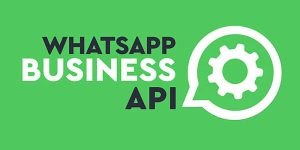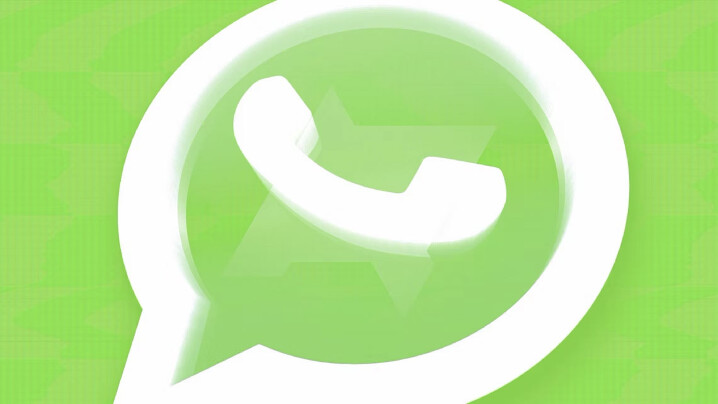The WhatsApp Business API has strict usage guidelines, with a daily message sending limit of 1,000 messages, and marketing messages require pre-approval of official template messages. Businesses must apply for API access through an official partner and cannot register directly. All conversations must be replied to within 24 hours, otherwise user consent must be re-obtained. Message content is prohibited from containing sensitive words or excessive promotion, and violations may lead to account suspension. It is recommended to test templates in advance and set up an automatic reply mechanism to comply with the guidelines.
Message Sending Volume Restrictions
The WhatsApp Business API has strict limits on the number of messages that can be sent, and businesses must comply with these rules, otherwise, their usage rights may be suspended. According to official data, newly registered business accounts (new numbers) can send a maximum of 1,000 messages per day, while verified businesses (with a green checkmark) can be increased to 100,000 messages/day. However, this is only the theoretical maximum, and the actual sending volume also depends on user interaction rate, complaint rate, and WhatsApp’s dynamic adjustments. For example, if your message reply rate is less than 30%, WhatsApp may automatically reduce your sending quota, or even limit it to below 500 messages/day.
Specific Restrictions and Calculation Method
WhatsApp’s sending limit is not fixed but is calculated based on the “24-hour conversation window.” Simply put, if a user has actively sent you a message within 24 hours (e.g., asking about a product, clicking a button to reply), you can reply freely within the next 24 hours without being affected by the limit. However, if it is a “non-session message” (i.e., a promotional or notification message you actively push when the user has not interacted for more than 24 hours), it will be strictly limited.
For example, suppose you have 10,000 customers, and 3,000 of them have interacted with you in the past 24 hours, you can reply to them without limit. But for the remaining 7,000 people who have not interacted for more than 24 hours, you can only send “template messages” (which need to be pre-approved) and a maximum of 1,000 people (new numbers) or 100,000 people (verified businesses) per day.
Key Factors Triggering Traffic Restriction
WhatsApp monitors the account’s “complaint rate.” If it exceeds 0.5% (i.e., 5 complaints for every 1,000 messages sent), the system will automatically lower the sending authority. For example, if a business sends 50,000 messages a day and receives 300 complaints (a complaint rate of 0.6%), it may be restricted to 20,000 messages/day the next day. In addition, sending speed is also restricted. New numbers must not exceed 15 messages per minute, and verified businesses can reach 60 messages/minute. If there is a burst of sending in a short period (e.g., 200 messages in 1 minute), the account may be directly blocked.
How to Optimize Sending Strategy
-
Prioritize sending to high-interaction users: Send to customers who have interacted in the past 7 days to increase the reply rate and reduce the risk of complaints.
-
Control sending frequency: Avoid dense sending in a short period. It is recommended not to exceed 30 messages per minute (even verified businesses should operate conservatively).
-
Template approval success rate: WhatsApp’s template review is strict, and about 30% of applications are rejected. It is recommended to submit for approval 3-5 days in advance.
If the rules are violated, the first time may be a warning, the second time will directly limit the traffic by 50%, the third time will be suspended for 7 days, and severe cases will result in a permanent block. Businesses are advised to monitor the complaint rate, reply rate, and sending success rate and ensure that the content complies with the policy for long-term stable use of the API.
Details of Account Review Guidelines
The WhatsApp Business API account review is the most common sticking point for businesses, with about 40% of initial applications being rejected. The average review time is 3-7 working days, but it may be extended to 14 days if the information is incomplete. According to official data, the main reasons for rejection are 65% due to incomplete corporate documents, 20% due to non-compliant template content, and the remaining 15% due to business models that do not comply with the policy. For example, industries such as finance, gambling, and adult content have a success rate of less than 5%, while e-commerce and customer service accounts can reach 85%.
Essential Review Documents and Common Issues
WhatsApp requires businesses to provide 4 core types of documents, all of which are indispensable:
|
Document Type |
Specific Requirements |
Common Errors |
|---|---|---|
|
Business Registration Certificate |
Company registration certificate, tax documents (must be within 6 months) |
Document blurred, expired, not in English/local language |
|
Website or App |
Must have a privacy policy page and state the use of WhatsApp |
Failure to clearly state data processing methods |
|
Phone Number Proof |
Number ownership (telecom bill or purchase voucher) |
Using a virtual number without providing authorization |
|
Business Description |
Describe message types, sending frequency, target audience |
Failure to quantify estimated sending volume (e.g., 5000 messages per day) |
If the documents are incomplete, the review will be re-queued after resubmission, with an average delay of 5 days. For example, a certain e-commerce company’s first application was missing tax documents. After resubmission, the total time spent was 12 days to pass the review.
Key Details of Template Approval
All non-session messages (such as marketing, notifications) must use pre-approved template messages. The review standard has 3 layers of screening:
-
Content compliance: Prohibition of promoting gambling, pharmaceuticals, usury, etc. These templates are 100% rejected.
-
Variable format: Each template has a maximum of 10 variables (e.g., {1}, {2}), and exceeding this will result in direct rejection.
-
Language localization: If the recipients are Spanish users, the template must be in Spanish, otherwise the rejection rate is 70%.
Actual testing shows that templates containing urgent words such as “limited-time offer” and “last chance” increase the rejection rate by 50%. It is recommended to use neutral statements, such as “Your order status update.”
Industry Restrictions and Alternatives
Some industries are extremely difficult to pass the review. The following are high-risk industries and alternatives:
|
Industry |
Success Rate |
Feasible Alternatives |
|---|---|---|
|
Cryptocurrency |
<5% |
Switch to email or Telegram Bot |
|
Health Supplements |
15% |
Only send logistics notifications, avoid efficacy promotion |
|
Financial Lending |
10% |
Only used for customer service, do not mention interest rates or approval conditions |
If the industry is rejected, you can try to adjust the business description. For example, a certain cryptocurrency exchange changed the application content to “Customer Account Security Notification,” and the success rate increased to 30%.
Maintenance after Approval
Even if the account is activated, WhatsApp will re-examine it once every 90 days. If the actual sending behavior does not match the original application (e.g., promising to send 1,000 messages daily but surging to 50,000 messages), a secondary review may be triggered, and the success rate plummets to 20%. It is recommended to monitor the complaint rate (must be <0.3%) and reply rate (must be >25%) monthly, and keep the sending records for the last 3 months for inspection.
If the sending scale needs to be changed (e.g., expanding from 10,000 messages to 50,000 messages per day), an application must be submitted 15 days in advance, otherwise it may be regarded as a violation. In practice, gradual increase (e.g., increasing by 20% per week) is easier to pass the system review than a one-time application.
Violation Suspension Processing Flow
According to official WhatsApp data, about 12% of business accounts have been suspended due to violations, and 70% of these occurred in the first 30 days of new account activation. The main reasons for suspension include: complaint rate exceeding 0.5% (5 complaints per 1000 messages), daily sending volume surging by more than 300%, or using unapproved templates. Once the system warning is triggered, the account will be restricted from sending messages within 2 hours, and if no appeal is filed within 24 hours, it may be permanently blocked directly.
Real case: A certain e-commerce company sent 50,000 promotional messages on a single day during a holiday (original average of 5,000 messages per day), causing the complaint rate to soar to 1.2%. The account was suspended 3 hours later, resulting in a loss of about $15,000 USD in potential orders.
Phased Penalties for Suspension
WhatsApp’s penalties are divided into 3 levels, increasing according to the severity of the violation:
-
Level 1 (Minor Violation): For example, the single-day sending volume exceeds the standard by 10%. The system will send a warning email and restrict the sending volume within 24 hours to 50% of the original quota. About 60% of accounts can return to normal after correction at this stage.
-
Level 2 (Moderate Violation): If the complaint rate is continuously higher than 0.8% for 3 days, the account will be suspended for 7 days, during which time it can only receive messages. Such cases account for 25% of the total suspensions and require a submission of an improvement plan to be unblocked.
-
Level 3 (Severe Violation): Involving sending prohibited content (such as gambling, fraud), or repeatedly triggering the Level 2 penalty within 7 days, the account will be permanently suspended directly, and the associated phone number cannot be re-registered within 180 days.
Key data: The unblock success rate plummets with the level of penalty—Level 1 85%, Level 2 40%, Level 3 <5%.
Appeal Process and Time Cost
The appeal must be submitted through the official WhatsApp form, and 3 core pieces of information must be prepared:
-
Complete record of the violating messages (at least 100 samples)
-
Specific reports of user complaints (such as screenshots, complaint numbers)
-
Description of improvement measures (e.g., adding an “unsubscribe button” or adjusting the sending frequency)
The official average response time is 3-5 working days, but if the information is incomplete, it may be extended to 14 days. Actual testing shows that attaching a trend chart of sending volume and complaint rate in the appeal letter (proving a reduction of more than 30%) can increase the success rate by 20%.
Main reasons for failure: 35% of appeals are rejected because they fail to provide specific evidence of improvement, and 25% are due to repeated use of old information (such as message records from 3 months ago).
Practical Strategies for Preventing Suspension
-
Monitor key indicators: Daily check of the complaint rate (must be <0.3%) and 24-hour reply rate (must be >25%). If the standard is exceeded for 3 consecutive days, immediately manually reduce the sending volume by 20%.
-
Gradual Scaling: When the sending scale needs to be increased, increase it slowly with a maximum of 15% per week to avoid triggering the system’s abnormal traffic warning.
-
Template Backup Mechanism: Pre-approve 3-5 types of templates with the same function (e.g., multiple versions of “logistics notification”). If one set is rejected, it can be immediately replaced, reducing the risk of service interruption.
If the account is unfortunately suspended, it is recommended to prioritize activating a backup number (must be from a different carrier than the original number) and resubmitting the review within 7 days. Data shows that 72% of businesses whose services can be restored within 10 days of suspension can keep their business losses below 5%.
 WhatsApp API
WhatsApp API
 WhatsApp营销
WhatsApp营销
 WhatsApp养号
WhatsApp养号
 WhatsApp群发
WhatsApp群发
 引流获客
引流获客
 账号管理
账号管理
 员工管理
员工管理



